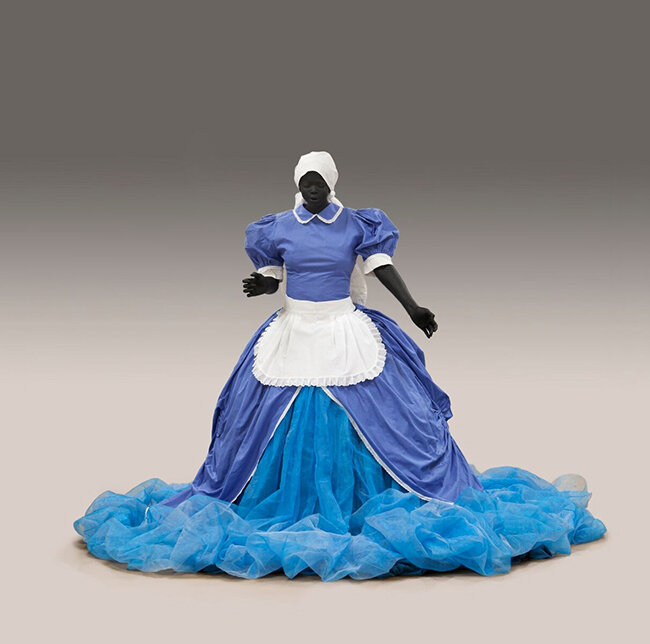(Re)Visioning Her-Story
Mary Sibande’s Smithsonian African Artist Award
At the National Museum of African Art (NMAfA), a Smithsonian Institution, women from the motherland take center stage.
A two and a half hour train ride away from the razzmatazz of New York City’s art scene, in the nation’s capital of Washington DC, is the Smithsonian’s National Museum of African Art: A post-modern jewel of a building tucked away between the Arthur M. Sackler Gallery for Asian Art and the Air and Space Museum. Despite its small size, the museum was recently “big enough” to admit that only a staggeringly small 11% of the collection is by women artists. To begin rectifying this, the museum is actively focusing its limited resources on increasing its representation of women, and one of its first moves was to honor Johannesburg-based Mary Sibande with the African Artist Award. Sibande’s figures critique stereotypical depictions of African women, taking on gender, identity, inequality, access, privilege and power. “Engaging our visitors in understanding the aesthetic achievements of historic and contemporary African artists is at the heart of our museum’s mission” said Christine Mullen Kreamer, the museum’s acting director.
Mary Sibande, Sophie-Merica, 2009, mixed media installation, dimensions variable. Image courtesy of the Smithsonian National Museum of African Art.
The museum’s purchase of Sibande’s Sophie-Merica roars back at years of exclusion. Discussing Sibande, NMAfA museum curator Karen Milbourne muses:
“I vividly remember when I first came into the presence of one of Mary Sibande’s sculptural installations in 2010. It was “Conversation with Madam CJ Walker” (2009). I was familiar with her work through images, but this was the first time I walked into a room alongside the outreaching arms of Mary’s sculptural avatar, Sophie. The rich inner life of this character, her magical ability to reach through time and change not just the nature of representation but the power of perception, and the sheer presence—or aura if you prefer the words of Arthur Danto–of the artwork was unforgettable. It is an incredible honor 7 years later to be a part of the team recognizing Mary’s contributions with a Smithsonian African Artist Award.”
“Most of all, however, it is a privilege to be able to recognize an artist whose intellectual rigor and honesty, whose technical precision and vision challenge not only how we see the past, but transform the future.”

